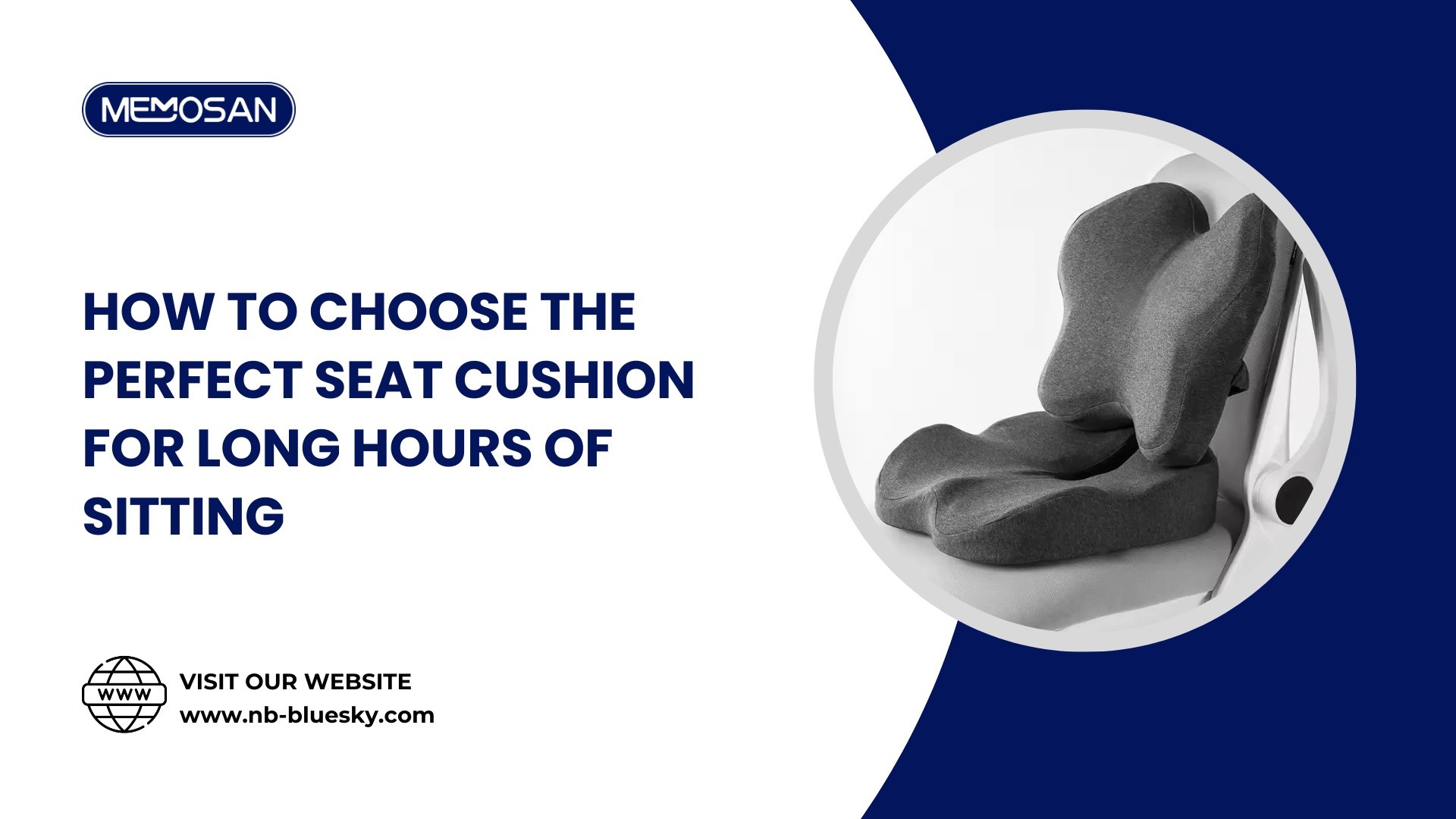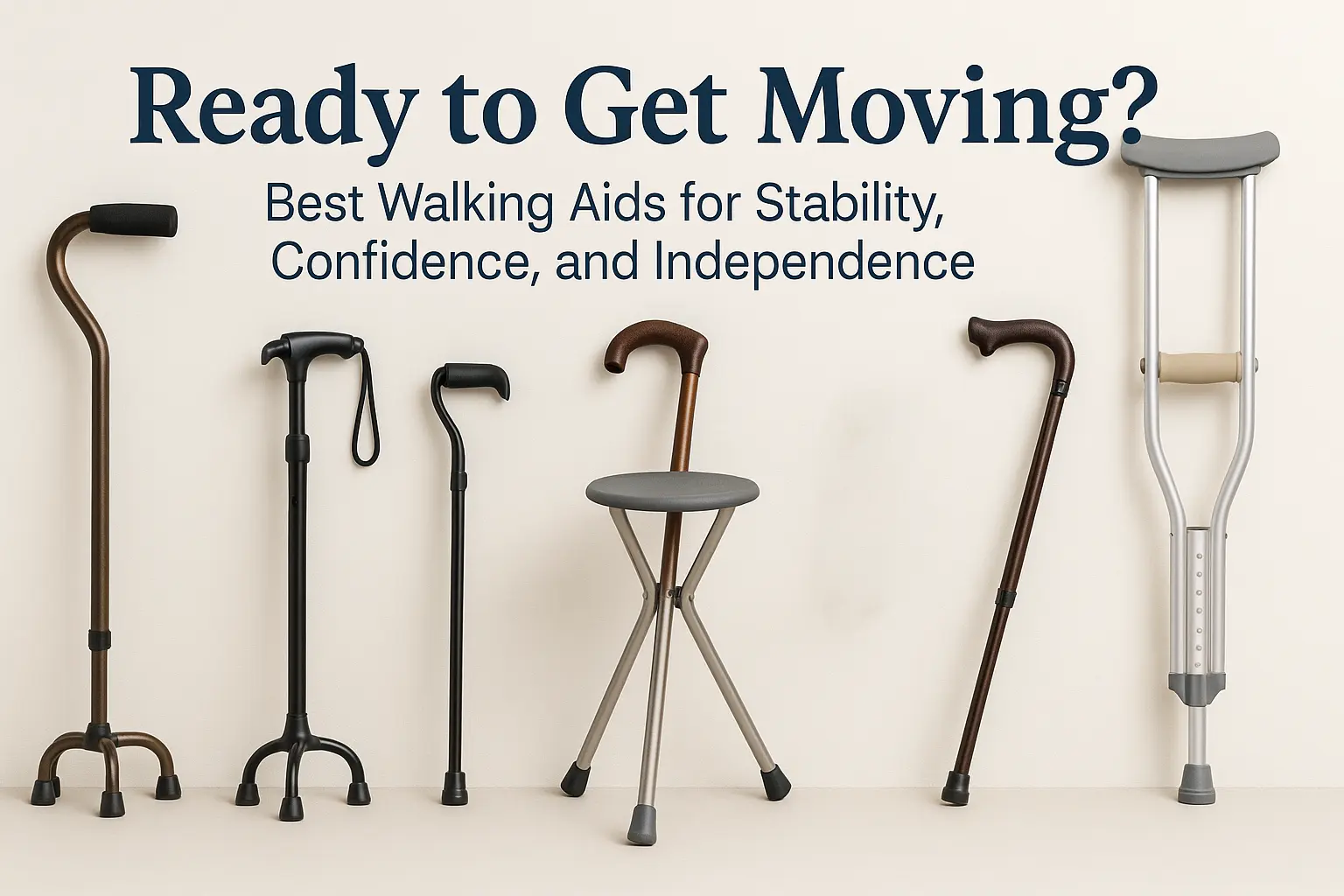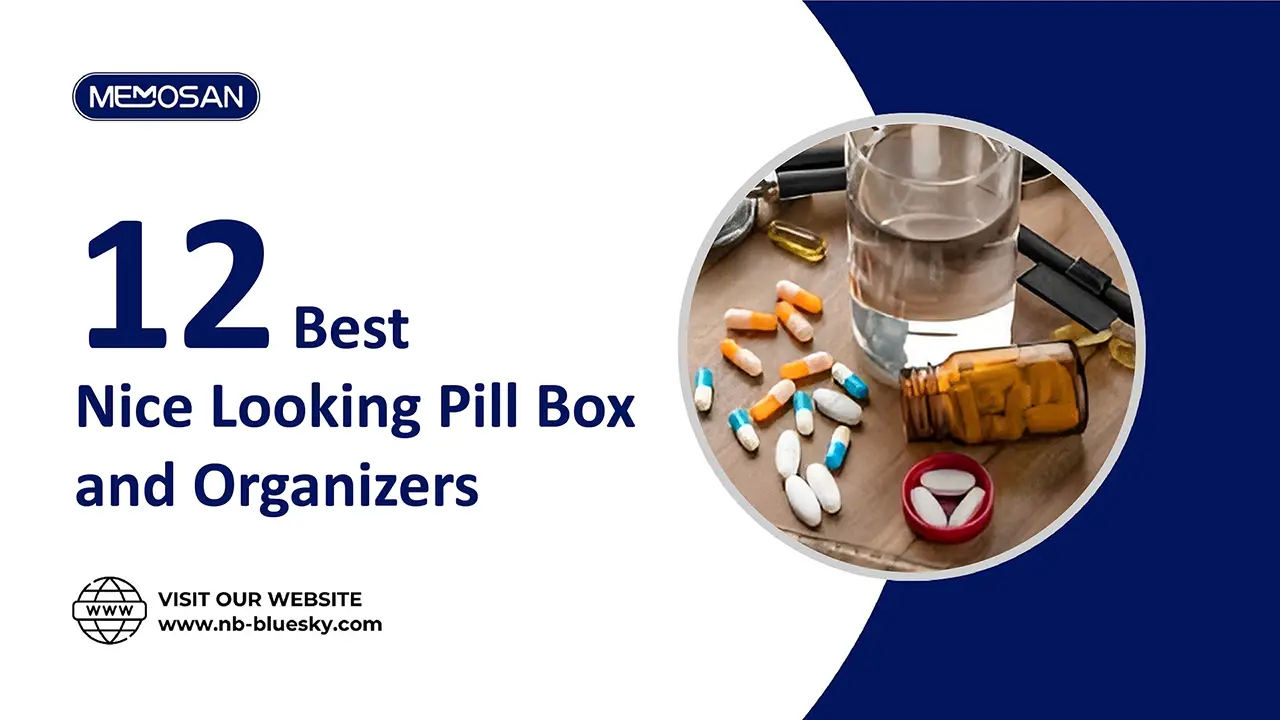Finding the perfect seat cushion can make a huge difference if you sit for extended periods. An appropriate seat cushion can help prevent circulation issues, back pain, and bad posture from prolonged sitting. Aside from the ergonomic design, size, thickness, and portability of the cushion, look for materials like memory foam or gel. Additional elements that improve your comfort include durability, anti-slip properties, and cooling capabilities. There’s a cushion that suits your demands whether you’re battling back pain or sciatica, driving, gaming, or working at a desk. Well-known brands provide a range of choices, enabling you to choose the ideal fit. Regularly cleaning and correctly utilizing your cushion may keep it in good condition.
Introduction
Spending long hours sitting at a desk or in a car can be uncomfortable and even harmful to your health. Due to insufficient support when sitting, many people experience circulation problems, back pain, and bad posture. A well-chosen seat cushion can significantly improve your situation by providing the support and comfort required to mitigate these issues. In this guide, we’ll cover the key factors and features to consider when choosing the perfect seat cushion to help you stay comfortable and healthy during long periods of sitting.
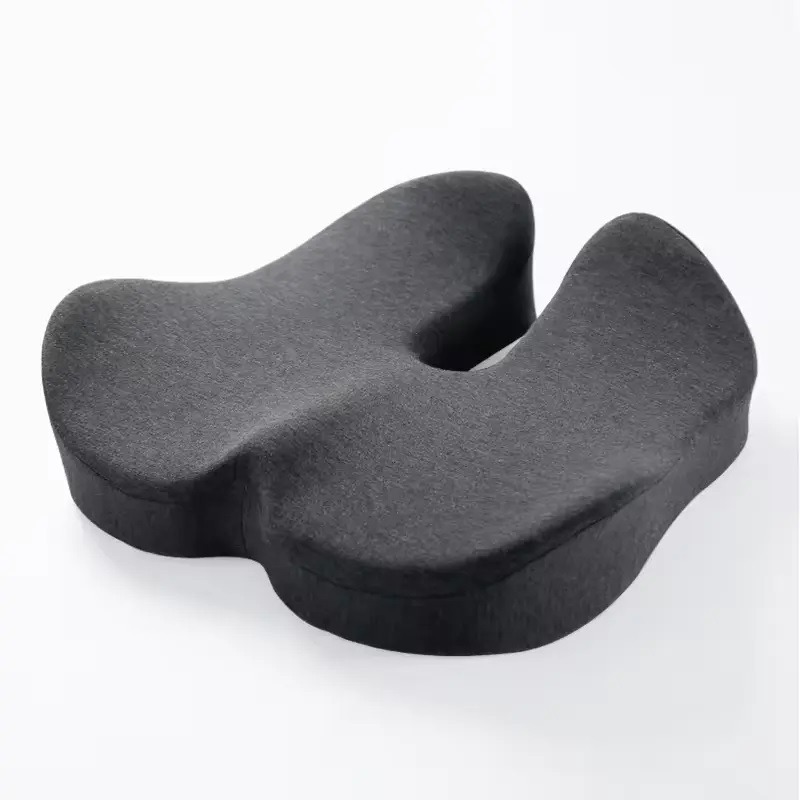
Understanding the Need for a Seat Cushion
Sitting for extended periods can cause back pain, bad posture, and pressure sores, among other health problems. Inadequate support frequently causes pain and long-term issues like decreased circulation and a misaligned spine. A well-designed seat cushion reduces these worries by offering the support required to maintain proper posture and reduce pressure on the hips and spine. This improves general comfort in addition to relieving pain and discomfort. Greater comfort directly correlates with higher productivity because it makes it easier for people to concentrate and perform more effectively. If you spend a lot of time sitting down, consider investing in a high-quality seat cushion as a proactive measure to ensure your productivity and well-being.
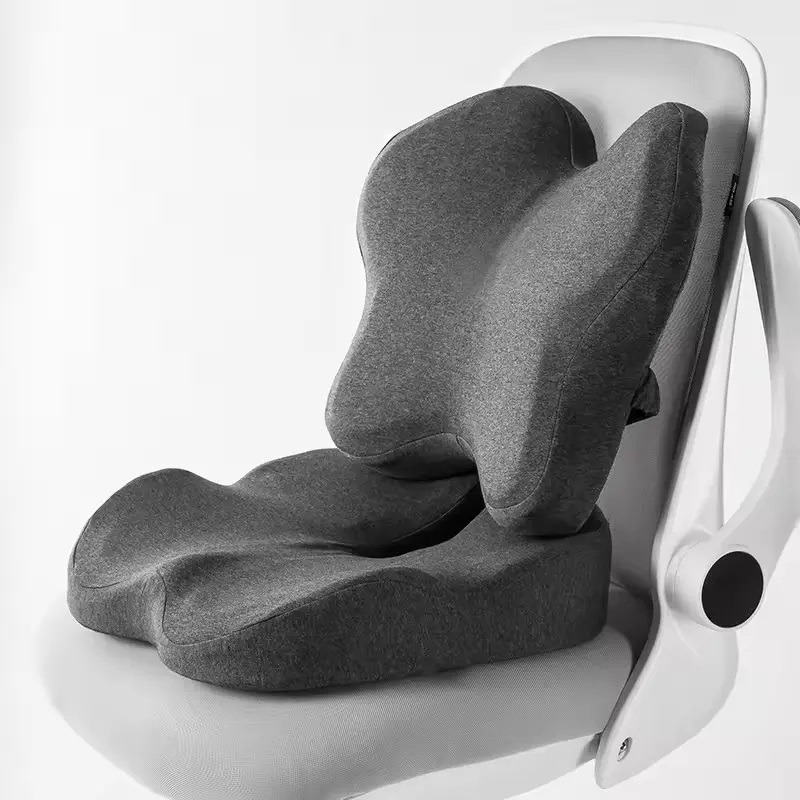
Different Types of Seat Cushions
For long periods of sitting, choosing a suitable seat cushion is important for both comfort and health. The primary categories are as follows:
Memory Foam Cushions
Benefits: By taking on the shape of your body, it offers superior support.
Best Use Cases: Perfect for usage at home or in workplace chairs.
Gel Cushions
Features: Provides even weight distribution and cooling capabilities.
Best Use Cases: Ideal for truckers or gamers who require a cooler sitting experience.
Inflatable Cushions
Pros: Very portable and adjustable firmness.
Cons: It may require regular adjustments and need to be more durable.
Best Use Cases: Excellent for brief or travel needs.
Orthopedic Cushions
Benefits: Designed to assist good posture and ease back pain.
Best Use Cases: Suggested for people with particular medical conditions such as disc herniation or sciatica.
Hybrid Cushions
Benefits: Combines gel and memory foam for increased comfort.
Best Use Cases: Perfect for users looking for cooling effects in addition to support.
Key Features to Consider
Consider the following essential elements when selecting the ideal seat cushion for extended periods spent sitting down:
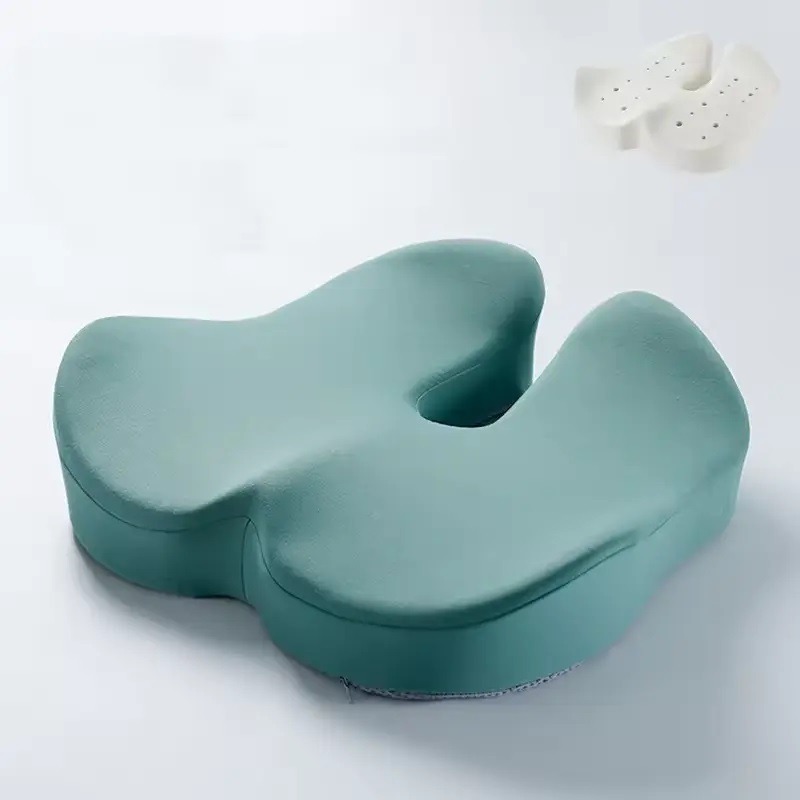
Material
The right material can greatly improve support and comfort. Examples of these materials are memory foam, gel, and air. The gel has cooling qualities, memory foam fits your body, and air cushions allow you to customize the firmness.
Ergonomics
Ergonomic designs support proper posture by reducing pressure on your muscles and spine. Seek pillows that encourage your hips and back to align naturally.
Size and Shape
Making the right choices about size and shape guarantees that the cushion will comfortably fit your body and chair. Comfort and efficacy are maximized with a properly fitting cushion.
Portability
If you regularly change your seating arrangements, a portable cushion is necessary. Foldable and lightweight designs facilitate easy transportation.
Durability
A resilient cushion that can tolerate regular use and hold its shape over time provides long-term cost-effectiveness. A cushion’s durability is influenced by its high-quality structure and materials.
Breathability
Breathable cushions keep you cool and comfortable by preventing heat accumulation. Enough ventilation is essential, particularly when sitting for extended periods.
Ease of Cleaning
Hygiene and lifespan depend on routine maintenance. Select cushions that have washable, detachable coverings for convenience of cleaning.
Particular Use Cases and Recommendations
Office Workers
- For all-day comfort and ergonomic support, choose memory foam seat cushions.
- Lower back pain can be avoided, and good posture can be maintained using lumbar support pillows.
Drivers
- Gel seat cushions improve comfort and reduce pressure points during extended car rides.
- Cushions to guarantee stability and safety with a non-slip bottom.
Gamers
- Cushions that are thick and shaped to keep you comfortable throughout long gaming sessions.
- Cooling gel cushions to keep you from getting too hot.
Wheelchair Users
- Proper alignment and prevention of pressure sores are the goals of orthopedic seat cushions.
- Covers for cushions that breathe to keep them comfortable and hygienic.
Students
- Study chairs with reasonably priced memory foam cushions can accommodate extended study sessions.
- Lightweight and portable solutions make commuting between home and campus simple.
Benefits of Using a Seat Cushion
Posture Improvement
- The natural curve of your spine is supported by the ergonomic design of seat cushions.
- Helps to maintain good posture by encouraging a straight back and decreasing slouching.
Pain Relief
- Reduces hip, tailbone, and back pain by dividing weight equally.
- Minimizes the strain on delicate areas, reducing and easing the discomfort associated with extended sitting.
Enhanced Circulation
- Enhances blood flow to the lower legs, preventing numbness and tingling.
- Reduces the incidence of deep vein thrombosis (DVT) and other circulation problems by improving circulation.
Support for Specific Conditions
- It is intended to provide focused treatment for a variety of ailments, including coccyx discomfort, herniated discs, and sciatica.
Specialized cushions help with pain relief and healing by adding extra support where it’s most required.
How to Choose the Right Seat Cushion
Finding the right seat cushion requires taking into consideration several aspects to make sure it satisfies your demands for both comfort and health:
Personal Preferences
Everyone’s level of comfort varies. Evaluate which materials and designs feel the most comfortable for you.
Testing Period
Search for companies that provide return policies and trial periods. This gives you the freedom to gradually try the cushion and ensure it meets your needs without committing.
User Testimonials
Read other users’ reviews and comments. Their experiences in real life might offer insightful information about the cushion’s durability and performance.
Expert Suggestions
Speak with medical doctors or ergonomic specialists. By following their suggestions, you can choose a cushion that supports good posture and addresses particular health issues.
Maintenance and Care for Your Seat Cushion
Regular Cleaning
- Spot clean non-removable covers using a moist towel and a mild detergent.
- Before using, let the cushion air dry fully to avoid mildew and mould.
Tips for Storing
- Store away from direct sunlight in a cool, dry location to avoid material deterioration.
- To keep the cushion’s shape, don’t place heavy items on top of it.
- Use a cover or bag for protection when storing anything for a long time.
Replacement Indicators
- Noticeable decrease of support or flattening of the cushion.
- Continuous discomfort even with appropriate use.
- Obvious signs of wear and tear, including material tears or splits.
Final Thoughts
It is important for people who sit for long periods to choose the right seat cushion. This article has covered a variety of seat cushion types, key characteristics to consider, and situation-specific advice. Investing in a high-quality seat cushion can improve your comfort, promote better posture, decrease pain, and increase your well-being and productivity. A well-selected seat cushion is not just a luxury—it’s a necessary tool for maintaining health when sitting for extended periods. Examine your current seating arrangement and consider replacing it with a cushion that meets your needs. The correct seat cushion can protect your long-term health and completely change how you sit. Don’t wait; get a better seat cushion immediately to see how your everyday comfort and productivity will increase.
FAQs: Seat Cushion
What is a cushion seat?
A cushion seat is a padded support added to a chair to improve seating comfort. By adding extra softness and support, it lessens physical strain on the body.
What is a good cushion to sit on?
A decent seat cushion should be made of high-quality materials that mould to the contours of your body, such as memory foam or gel. It should also provide ergonomic support to prevent pressure points and preserve good posture.
Who needs a seat cushion?
A seat cushion benefits anyone who spends much time sitting down, including office workers, truckers, and gamers. It is also strongly advised for those who suffer from back discomfort, bad posture, or other health problems associated with extended sitting.

